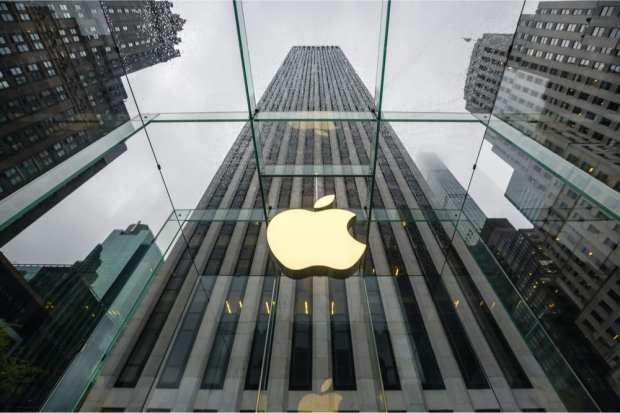Apple Earnings Transcend Pandemic Economics

For a company that doesn’t have a retail location open outside of China or South Korea because of the coronavirus pandemic, Apple acquitted itself nicely in the second quarter.
On Thursday (April 30), the company posted quarterly revenue of $58.3 billion, an increase of 1 percent from 2019, and quarterly earnings per diluted share of $2.55, up 4 percent. Sixty-two percent of the quarter’s revenue was made up of international sales.
“Despite COVID-19’s unprecedented global impact, we’re proud to report that Apple grew for the quarter, driven by an all-time record in services and a quarterly record for wearables,” said Tim Cook, Apple’s CEO, on an earnings call. “In this difficult environment, our users are depending on Apple products in renewed ways to stay connected, informed, creative and productive. We feel motivated and inspired to not only keep meeting these needs in innovative ways, but to continue giving back to support the global response, from the tens of millions of face masks and custom-built face shields we’ve sent to medical professionals around the world, to the millions we’ve donated to organizations like Global Citizen and America’s Food Fund.”
In terms of specific business units, iPhone revenue was down to $28.96 billion, a 7 percent year-over-year decrease. The shortfall was mitigated by a 16 percent rise in services revenue, which includes iCloud, Apple Music and other subscriptions, to $13.34 billion. Apple’s stores around the world, except in China and one location in Korea, are shuttered until further notice.
“On the supply side, we suffered from some temporary supply shortages during February, but we’ve been extremely pleased with the resilience and adaptability of our global supply chain, as well as its ability to get people back to work safely when circumstances allow,” said Chief Financial Officer Luca Maestri on the call. “Our operations team and manufacturing partners put forth an extraordinary effort to restore production quickly, and we exited the quarter in a good supply position for most of our product lines. On the demand side, after a very strong first five weeks, we saw the impact of COVID-19 affect demand in China for the next five weeks and then more broadly around the world for the last three weeks of the quarter where lockdowns and point of safe closures became more widespread in many countries.”
Apple’s engineers and designers are working remotely as the company has recommended through the end of May. Its annual developers conference in June, WWDC, has moved online.
Cook hinted that the company’s online business has seen a surge across the globe.
“If you now step out into April and look at that, early April, starting like the end of March, but in the second half of April, we’ve seen an uptick across, really, across the board,” he said on the call. “It’s not just related to a certain geo or a certain product. We think, by looking at it, a part of it is due to just our new products, a part of it is due to the stimulus programs taking effect in April, and then a part of it is probably the consumer behavior of knowing this is going to go on for a little while longer and getting some devices and so forth lined up to work at home… We believe that iPad and Mac are going to improve on a year-over-year basis during this quarter, and that’s customers that are either taking online education or working remotely.”
According to an analysis by The Wall Street Journal, Apple’s earnings have relieved some fears about the effects of the pandemic.
“Apple, which relies on China for nearly a fifth of total revenue and for almost all of its manufacturing production, was highly exposed to the pandemic’s effect on the country, the first to lock down its economy to curtail the outbreak,” it said.
Apple’s sales dropped $9.46 billion or 7.5 percent across Greater China, including Hong Kong and Taiwan. That’s less dramatic Starbucks, for example, which reported 90 percent same-store sales decline Monday.
Cook’s comments during the company’s call ended on a promising note.
“We’ve always managed through difficult moments by doubling down and investing in the next generation of innovation,” he said. “And that’s our strategy today. And so, while we can’t say for sure how many chapters are in this book, we can have confidence that the ending will be a good one. Apple will continue to do everything we can do to help the global response and to keep our customers learning, creating, sharing and connecting so that life can remain as normal as it can during this challenging time.”
